#Essential Oils and Aromatherapy
Explore tagged Tumblr posts
Text
Smorgasbord Medicine Woman’s Treasure Chest Rewind– Essential Oils and Aromatherapy – Oils, origins, uses and Safety - Bergamot and others it blends with by Sally Cronin
Welcome to the repeat of the 2018 series about essential oils and aromatherapy and I hope those new to the blog will enjoy. Twenty-four years ago I ran a health food shop and diet advisory centre here in Ireland and we sold essential oils for aromatherapy. I thought that I should learn more about it and took a course on the subject. I am looking forward to sharing this relaxing therapy with…

View On WordPress
0 notes
Text
Ways to use Essential Oils:
Sleep -> a few drops of lavender on a tissue to help you relax and fall asleep
Perfume -> dilute with a carrier oil (coconut, caster) and place on skin
Headaches -> peppermint oil is known to ease headaches
Clothing -> add a few drops to laundry for slightly scented clothing
Hair -> rosemary oil shown to improve dandruff and promote hair growth
Nausea -> the scent of lemon / orange oil is known to help with stomach upset
Reducing anxiety -> lavender, jasmine, basil, chamomile, rose (carry scented item or dilute onto skin)
Colds -> eucalyptus oil for congestion
Air freshener -> mix with water in a spray bottle (lavender, eucalyptus, lemongrass all work well)
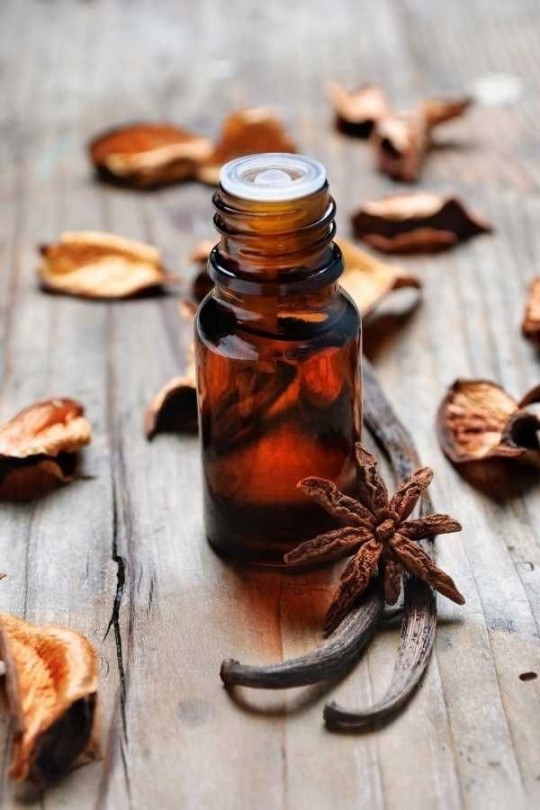

* look for 100% on the bottle so you know it’s not mixed with harmful chemicals.
* always dilute when placing on skin, should not be ingested without knowledge and caution, and can occasionally cause negative affects in some people.
#essential oils#aromatherapy#natural healing#healing herbs#healing#spiritual#spirituality#lavender#chamomile#peaceful sleep#sleep tips#creativity#the universe#manifestation#wicca#witch community#witchblr#spiritualjourney#scent#scented candles#headache#nausea#gut health#healthy mind#mental health#healthy#health#mindful#mindfulness#calming
171 notes
·
View notes
Text
What are Infused Oils?
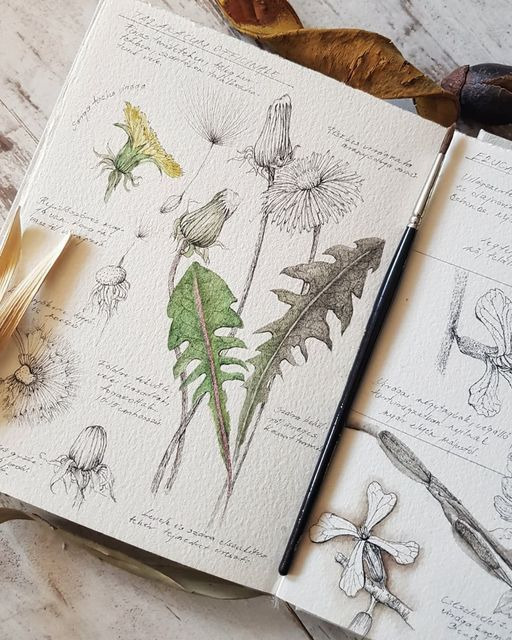
What are they?
Infused oils are herbal components or spices placed in a jar of carrier oil like Olive Oil, Grapeseed Oil, Avacado Oil, Jojoba Oil, Coconut Oil, etc. Can be used in cooking, herbal ailments and skincare.
Are they essential oils?
No. Short answer, no. Long answer? I'll give you an explanation. Essential oils are distilled using Steam Distillation, Solvent Extraction, CO2 Extraction, Maceration, Enfleurage, Cold Press Extraction, and or Water Distillation. Lotta words huh? It takes a lot of work to make essential oils. Unfortunately, it also takes quite a bit of that plant to make even those tiny 10ml bottles you purchase. Of course, each plant varies. However, it still can lead to a larger environmental impact.
For instance, one pound of essential oil can be extracted from approximately 250 pounds of rosemary leaves, or from 150 pounds of lavender buds, or say 50 pounds of eucalyptus leaves. This is why you see some as more expensive than others. Unfortunately, you can see where the problem lies in plants that are more threatened or endangered. If you must use essential oils, source responsibly (and not from a Pyramid scheme but I'm not opening that can of worms)
Can I use infused oils in my practice?
Yes! Absolutely! All these oil recipes you see for spell oils are exactly that. You can even use the elemental correspondences of the carrier oils you use for spell oils. As an example Olive Oil is traditionally known for the fire element and Coconut Oil is water. The possibilities for your personal correspondence are endless!
Now I'll stop rambling. Here are a few methods I learned to infuse oils in my courses and through self-herbalist study.
Method One:
The Folk Method - The most common
Directions
Place DRIED herbs in a clean, dry jar. Leave at least 1 to 3 inches of open space above your herbs to cover with oil.
Fill the remaining space in the jar with the oil of your choice, making sure to cover herbs by at least 1 inch or more. If the herbs emerge above the surface of the oil at any point while infusing, pour more oil on top to ensure the herbs remain covered.
Cap the jar tightly and shake well.
Place the jar in a sunny, warm windowsill and shake once or more per day.
After 2 to 3 weeks, strain the herbs out of the oil using cheesecloth or a mesh strainer. Or you can leave it in but straining is recommended if you are using dropper bottles as it clogs the caps.
Pour into clean glass bottles.
Remember to label your jars with the date, type of oil, and herbs used! You WILL forget! Trust me.
Store in a cool, dark place. The oil may keep for up to a year.
Method Two:
The Heat Infused Method - Quick Infusion
Directions
Place herbs in the crock pot or double boiler. Cover with extra virgin olive oil (or other carrier oil of choice), leaving at least an inch or two of oil above the herbs.
Gently heat the herbs over very low heat (preferably between 100° and 140° F for 1 to 5 hours, until the oil takes on the colour and scent of the herb. Some recommend heating the oil for 48 to 72 hours at a controlled temperature of 100° F. Turn off the heat and allow it to cool. I personally prefer letting it sit in a crock pot for 72 hours as I feel like I get all of the benefits out of the herb.
Once oil is cooled, strain using cheesecloth.
Bottle in dry, sterilized glass bottles. LABEL your bottles with the date and contents before storing them.
Store in a cool, dark, dry place for up to six months.
Best herbs to infuse in oil
There are a countless number of herbs, spices and resins that can be infused into the oil. Please make sure these herbs are free from pesticides and chemicals (not found on the roadside). Dried herbs work best as you don't want your mixture spoiling sooner. Here are some great examples of herbs to use.
Pine needles
Calendula flowers
Chamomile flowers
Lavender
Lemon balm
Peppermint leaf
Rosemary leaf
Thyme leaf
There you have it! Now have fun and source responsibility.
Happy witching!
Want to read more?
On sustainability and impact:
Links:
Dangers of essential oils and pets:
Link:
Want to check out my other post? Look at my Masterpost
#witchcraft#witch#infused oils#spell oils#essential oils#aromatherapy#kitchen witchcraft#herbal magic#herbalism#herbalist#herbal medicine#witchblr
111 notes
·
View notes
Text
my first job was working at an independent boutique where my family had been shopping for years and the owner always told me when I turned 16 I would work there so I turned 16 and went to work there and she wasn't kidding. and the first thing I did on my first day was read a book about the healing properties of essential oils. this was the most important thing to her. she never taught me how to check people out and I worked there for two years but I did read a book called "the coconut oil miracle". please note the store did not sell essential oils or coconut oil so idk
#we sold a lot of soap that contained essential oils#and one time my coworker had a headache and was going to take a pill and the owner made her smell lavender oil instead#and the coworker said it helped and the owner was so pleased with herself and to this DAY I wonder if that was true#or if she was just like I guess I'll be going home pretty soon anyway I can take the pill then#this was before essential oil MLMs became An Entire Thing and I've been wondering if this woman would be into that#or if she was really just on the old school straight up and down aromatherapy side of it all#also I didn't really get many headaches back then but now that I can get severe ones smelling any essential oil would be so triggering#i hate smells so much when I have a headache
9 notes
·
View notes
Text

#histhoughtslately#htl#lavender#aromatherapy#love#mental health#mental health support#healthy lifestyle#health#holistic health#natural#outdoors#plants#gardening#self care#essential oils#purple#color#scent#healing#heal#life path#black tumblr#integrative health#bath
19 notes
·
View notes
Text
youtube
New Video is up on my channel! All about my Aromatherapy and Herbalism Journey so far.
#witch#witchcraft#pagan#cardslinger#witch community#witchblr#youtube#wonderxviii#aromatherapy#herbalism#aromaheadinstitute#herbal academy#herbs#essential oils
3 notes
·
View notes
Text
5 Essential Oils You Need for a Stress-Free Day

The importance of looking for organic means of how to relieve the stress of the day in the current society cannot be underestimated. The use of essential oils is an exquisite way that promote relaxation as it leads to mental relaxation and spiritual replenishment. Here are the five Essential oils that you should use day by day so that you can hardly feel stressed at all!
1. Eucalyptus essential oil
The Eucalyptus essential oil is a many-in-one remedy famed for its uses in opening blocked tracheas and fending off mental fatigue. It gives off a cool, minty scent that reinvigorates the brain, calms the nerves, and minimizes stress. This revitalizing oil blend is great for establishing morning shower energy or any other time of day that may be convenient. You can use a couple of drops in the shower to make it an essential oil stream that will help invigorate your senses or fill your space with it to clean the air and improve your disposition. Because of the natural components added to it, it reduces stress and is used for the general well-being of an individual.
2. Jasmine Essential Oil
Jasmine needs no introduction when it comes to uplifting the mood and also acts as an anti-anxiety agent, courtesy of the jasmine essential oil. It also works as an antidepressant and enables the person’s emotions to become stable and release enormous calmness. It can be applied as a natural oil perfume while bringing about a relaxing feeling that is needed in the day. On the other hand, using it as a diffuser makes it create a beautiful and relaxing atmosphere, which can work well when used at home to create relaxation. It is relaxing to the senses and thus can be said to have a healing effect on human beings while also being luxuries to the human senses.
3. Cedarwood Essential Oil
Cedarwood essential oil is one of the best oils that help reduce stress and is suitable for relaxation and providing a good night’s sleep. It is most suitable for making the place calm and serene, which is suitable during the nighttime. To harness its properties, use a few drops in your diffuser mix at night to have your environment smell as calming as the oil. To be more specific, rub diluted cedarwood oil on the soles of your feet to release the tension and make your body relaxed for sleep.
4. Frankincense Essential Oil
Frankincense essential oil is referred to as the ‘King of oils’ or ‘the oil of deep breathing’ because of its benefits in helping you to focus, meditate, and even release anxiety. Due to its highly aromatic, almost sticky consistency, it is perfect for meditation, as it helps to fight off a sense of being overwhelmed. If you want to use frankincense, add it to your practice of yoga or meditation by using it as a diffuser to set a calming and concentrated environment. Or, dilute oil in a carrier oil gently rub it on your chest, and breathe deeply to feel calm and accept the oil's calming properties. It is a miracle worker for health and can be used in a number of ways to improve one’s health.
5. Lavender Essential Oil
The Lavender essential oil is considered to be the king of all oils for stress relief and is a basic requirement in the list. It has a mild, flowery fragrance that calms the nervous system, reduces anxiety, and improves sleep making it a perfect tool for any treatment regimen. To use, simply place a couple of drops in a diffuser and let the scent change the mood of your room. You can also try adding lavender oil with carrier oil and rubbing the mix on your wrists or temples so that the fragrance can help calm and relax you for the rest of your day.
6. Ylang-ylang essential oil
Ylang-ylang oil is best described as sweet and floral and is widely used to treat hypertension and promote relaxation. It is suitable for use after a busy day at work or during moments when one feels stressed, this oil is designed to deal with body and mind stress. Ylang-ylang can be diluted with a carrier oil and massaged onto the skin for relaxation of muscles and to help calm down. However, you can also add several drops to your bath to help you make your bathing experience more relaxing, turning your shower into a relaxing moment.
Conclusion
Using essential oils is an easy approach to fight stress and improve your quality of life. The eucalyptus used to make these remedies invigorate the body while lavender and cedarwood help to soothe the mind and body. Sweet almond and lavender oil not only calm your nerves but also make your surrounding environment friendly to relax after a busy day at work.
For the true miracle working of these oils, check out the natural bounty of pure and authentic selection at Dose of Naturals Our selected oils are to help you create a calm and balanced environment in your life. Start your stress-free journey today—go to the Dose of Naturals and find the power of nature’s best remedies
#best carrier oils#naturals essential oils#organic carrier oils#pure essential oils#best essential oils#Anxiety Relief#buy essential oils#Self Care#Relaxation#Stress Relief#Aromatherapy#Lavender Oil#Natural Remedies
4 notes
·
View notes
Text


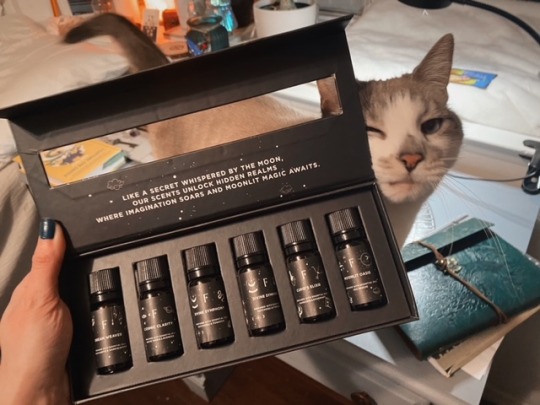
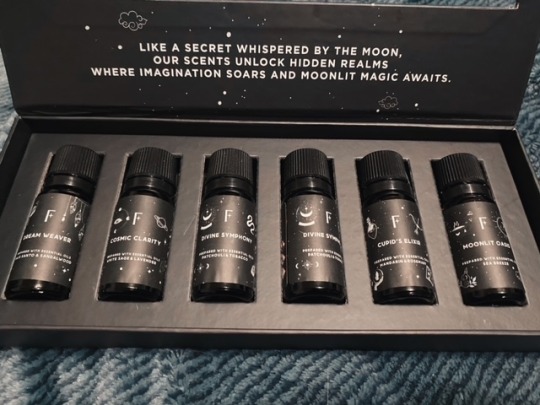
Just a lil' something that I got for my collection. I'm so excited and so is my cat apparently
#paganism#witchcraft#witch#just witchy things#pagan#neopaganism#witches of tumblr#secular witchcraft#witches#witchblr#essential oils#aromatherapy#photography#magick#witchy vibes#witch vibes#sass witchcraft#sass witch#godless paganism
10 notes
·
View notes
Text
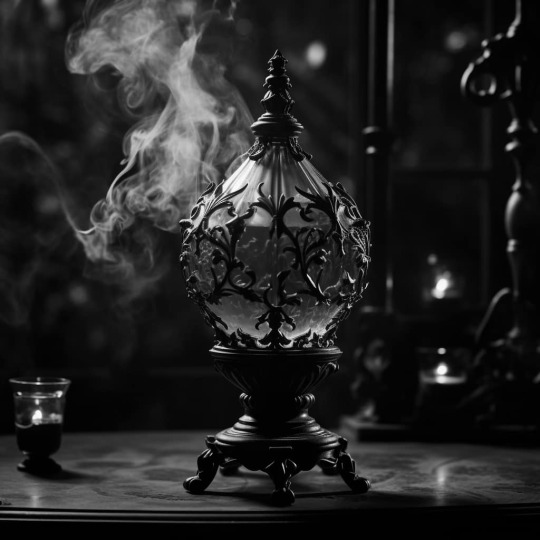
𝒯𝒽𝑒 𝒜𝓇𝓉 𝑜𝒻 𝒰𝓈𝒾𝓃𝑔 𝒶𝓃 𝒜𝒾𝓇 𝒟𝒾𝒻𝒻𝓊𝓈𝑒𝓇 𝒾𝓃 𝒲𝒾𝓉𝒸𝒽𝒸𝓇𝒶𝒻𝓉 Hᴀʀɴᴇssɪɴɢ Mʏsᴛɪᴄᴀʟ Aʀᴏᴍᴀs. Air diffusers can play a significant role in the practice of witchcraft, where scented air is believed to carry messages, reveal truths, and connect with the realm of spirits. These devices offer versatile means to create the desired atmosphere during rituals, ceremonies, and spellwork. Unlike incense, air diffusers can be more suitable for some practitioners due to various reasons, including health considerations and personal preferences. In this article, we will explore the multifaceted applications of air diffusers in witchcraft, covering their use in various magical purposes, such as banishing, cursing, and shadow magic. We will also delve into the magical significance of vapor as opposed to smoke or incense, shedding light on the unique qualities that make air diffusers a powerful tool in the practice of witchcraft.
Air diffusers are versatile tools in witchcraft, allowing practitioners to infuse spaces with various scents, each carrying its own magical significance. The aroma released by an air diffuser can serve as a medium for communication with the spirit world, as it is believed that spirits can be drawn to or repelled by specific scents. During rituals or ceremonies, practitioners may select scents that resonate with their intentions, whether they seek to invoke protective spirits, honor ancestors, or connect with particular deities.
One of the most common uses of air diffusers in witchcraft is for banishing negative energies and entities. By diffusing cleansing and purifying scents such as sage, frankincense, or rosemary, practitioners can create a barrier against unwanted energies, keeping their sacred space clear and protected. The diffused vapor becomes a potent tool for establishing boundaries and warding off malevolent forces, aligning with the magical intention to banish negativity.
In contrast to incense, air diffusers are favored by some witches for their smokeless and low-heat operation. This makes them suitable for individuals with respiratory issues or sensitivities to smoke. The choice of an air diffuser over incense can be seen as a practical consideration, ensuring that the practitioner can fully immerse themselves in the magical work without discomfort or health concerns. Furthermore, the controlled release of scents allows for a consistent and subtle presence of the chosen aroma, which can be essential for long rituals or meditation practices.
Cursing and hexing rituals also find use for air diffusers in witchcraft. Scents like black pepper, graveyard dirt-infused oils, or chili pepper lend an air of aggression and intensity to their workings. The vapor released by the diffuser can act as a conduit for the practitioner's intent, emphasizing the dark energy they wish to project. The aroma becomes an integral component of the curse, enhancing its potency.
Shadow magic, a branch of witchcraft that delves into the exploration of one's inner darkness and the mysteries of the subconscious mind, can greatly benefit from air diffusers. The subtle, vapor-based delivery of scents can contribute to the creation of an atmosphere that facilitates the practitioner's journey into the shadows of their psyche. Scents like myrrh, patchouli, or cedarwood can deepen the connection to the hidden aspects of the self, aiding in shadow work and inner transformation. Conversely, love spells and attraction magic can benefit from air diffusers as well. Aromatic oils like rose, jasmine, and ylang-ylang can be diffused to create an atmosphere of love, sensuality, and attraction. The gentle diffusion of these fragrances can enhance the effectiveness of spells designed to draw love and affection into one's life.
Air diffusers also have a role in divination and communication with the spirit world. When used in conjunction with specific oils, they can facilitate a clearer connection between the practitioner and the spirit realm. Oils like mugwort, cedarwood, or myrrh are known to enhance spiritual communication when diffused.
Protection spells in witchcraft often rely on the four elements, and air diffusers can represent the element of air in these rituals. By diffusing oils like eucalyptus or juniper, practitioners can strengthen the protective barrier around them or their sacred space, making it more challenging for negative energies or entities to penetrate.
In meditation and trance work, air diffusers serve as a valuable aid in reaching altered states of consciousness. A carefully selected blend of essential oils, such as lavender, frankincense, and sandalwood, can induce a deep state of relaxation, enhancing the ability to journey within or connect with higher realms.
The concept of elemental magic is central to many pagan and witchcraft traditions, with each element having its own unique properties and correspondences. Air diffusers, when used in spellwork, can invoke the power of the element of air/and or ether to lend energy and intent to a particular work. The gentle diffusion of air-element oils can create a sacred and potent space for rituals and spells that require the influence of this element.
The practice of smudging, common in many indigenous and pagan traditions, can be enhanced with air diffusers. By diffusing the smoke of sacred herbs or resins like sage or palo santo, practitioners can cleanse and purify their surroundings without the need for direct combustion. This smoke cleansing can be a powerful tool in removing negativity and unwanted energies.
Air diffusers are also instrumental in creating a harmonious and balanced environment. By diffusing oils associated with equilibrium, such as lavender and chamomile, practitioners can promote a sense of peace and balance within their homes or sacred spaces, fostering a positive atmosphere for their magical work.
Protection against psychic attacks and negative energies is another common use of air diffusers in witchcraft. Oils with strong protective properties, such as black salt-infused oils or rosemary, can be diffused to create a shield of defense around an individual or their space, ensuring safety from harmful intentions or entities.
In the realm of prosperity and abundance spells, air diffusers can be used to amplify intentions of financial well-being. Essential oils like cinnamon, basil, and patchouli, when diffused, can attract wealth and prosperity into one's life.
Air diffusers are also a valuable tool for enhancing one's focus and concentration during magical rituals and spellwork. Oils like peppermint and rosemary can be diffused to stimulate mental clarity and enhance cognitive abilities, allowing practitioners to perform their magical work with precision.
Witches and practitioners of folk magic often turn to air diffusers when working with lunar energy. By selecting oils that correspond with the moon's phases, they can harness the moon's mystical power to enhance their magical intentions.
In the practice of kitchen witchery, air diffusers can be used to infuse the atmosphere with the energies of the herbs and spices used in culinary magic. This adds an extra layer of intention to the meals prepared, imbuing them with magical properties that promote health, abundance, and love.
For practitioners of herbal magic, air diffusers offer an effective means of working with the properties of various herbs. By diffusing essential oils extracted from specific herbs, they can tap into the magical and healing qualities of these plants.
Dreamwork and lucid dreaming are enhanced through the use of air diffusers. Lavender, mugwort, and marjoram oils, when diffused before sleep, can promote vivid dreams and facilitate dream recall, aiding in the exploration of the subconscious.
Air diffusers are also a valuable tool for aura cleansing and energy balancing. By diffusing oils that resonate with the chakras, practitioners can cleanse and balance their energy centers, promoting physical and emotional well-being.
In the art of sigil magic, air diffusers can be employed to charge and activate sigils by diffusing oils aligned with the sigil's intent. This creates a focused and charged environment for the manifestation of desires.
Psychic and intuitive abilities can be heightened through the use of air diffusers. Oils like mugwort and bay laurel, when diffused during meditation or divination, can open the third eye and enhance clairvoyant and clairaudient experiences.
Air diffusers are also valuable tools for harnessing the energies of the seasons and sabbats in witchcraft. By diffusing oils that correspond with the specific sabbat or season, practitioners can attune themselves to the natural cycles and celebrate the turning of the wheel of the year.
In the practice of candle magic, air diffusers can complement the spellwork by diffusing oils that correspond with the intention of the candle. This enhances the effectiveness of the magic by infusing the surroundings with the desired energy.
Psychic protection and boundary-setting are important aspects of spiritual practice, and air diffusers can be used to create a protective energy barrier. Oils like juniper or myrrh, when diffused, can establish a shield against unwanted influences and psychic attacks.
Air diffusers are a valuable addition to the practice of color magic. By choosing oils associated with a specific color, practitioners can infuse their magical work with the energy and symbolism of that color, enhancing the effectiveness of their spells.
Healing magic can benefit from the use of air diffusers by diffusing essential oils that promote physical and emotional well-being. Oils like eucalyptus, lavender, and chamomile can facilitate the healing process and promote recovery.
In the creation of enchanted spaces and altars, air diffusers can be used to infuse the area with the desired energy. By diffusing oils that correspond to the purpose of the space or altar, practitioners can create a sacred and powerful environment for their magical work.
Air diffusers can also be employed in weather magic and working with the energies of the wind. By diffusing oils associated with specific wind directions, practitioners can align their magic with the natural forces of the atmosphere.
In the realm of astral projection and out-of-body experiences, air diffusers can be used to create an atmosphere conducive to these practices. Oils like frankincense, myrrh, and cedarwood, when diffused, can help induce a trance-like state that facilitates astral travel.
Air diffusers are a valuable tool for grounding and centering in magical practice. Oils like patchouli, vetiver, and cedarwood, when diffused, can anchor an individual's energy and provide a sense of stability and balance.
In self-discovery, air diffusers can be used to create a supportive and introspective atmosphere. Oils like rosemary and lavender can promote self-reflection and inner exploration, aiding in the process of personal growth and healing.
Magical significance lies in the form of vapor released by air diffusers compared to traditional incense smoke. Vapor is often seen as a purer, more ethereal substance, connecting with the spirit realm on a subtler level. This can be particularly advantageous for practitioners who prefer a gentler approach to magic or seek to work with spirits in a more refined manner. The fine mist of vapor is believed to be a better medium for messages and revelations from the spirit world, as it represents a more direct and refined conduit for spiritual energies.
Air diffusers are powerful tools in the practice of witchcraft, offering a wide range of applications during rituals, ceremonies, and spell work. Their ability to release scented vapor makes them versatile instruments for invoking or banishing spirits, cleansing spaces, or delving into the realms of shadow magic. The choice of air diffusers over incense can be driven by health considerations and personal preferences, ensuring that practitioners can fully engage with their craft. The magical significance of vapor in witchcraft emphasizes its role as a subtle and potent medium for communication with the spirit world, making it an invaluable addition to the witch's toolkit. © Dʏsʜᴀɴᴋᴀ/Oᴅᴇᴛᴛᴇ ₂₀₂₃
#Air Diffusers#Scent Magic#Scent Witchcraft#Scent For The Senses#aromatherapy#Aroma#Witches Tools#Oils#fragrance oils#follow me#essential oils#The Power of Fragrance#AromaCraft#Witchcraft#Articles#Witchcraft Articles#Witchy Advice#Witch#Witches of the World#Witches of Australia#The Senses#Sacred Space#Occult#ritual#goth#gothic writing#darkness#esoteric#occultism#shadow magic
14 notes
·
View notes
Text
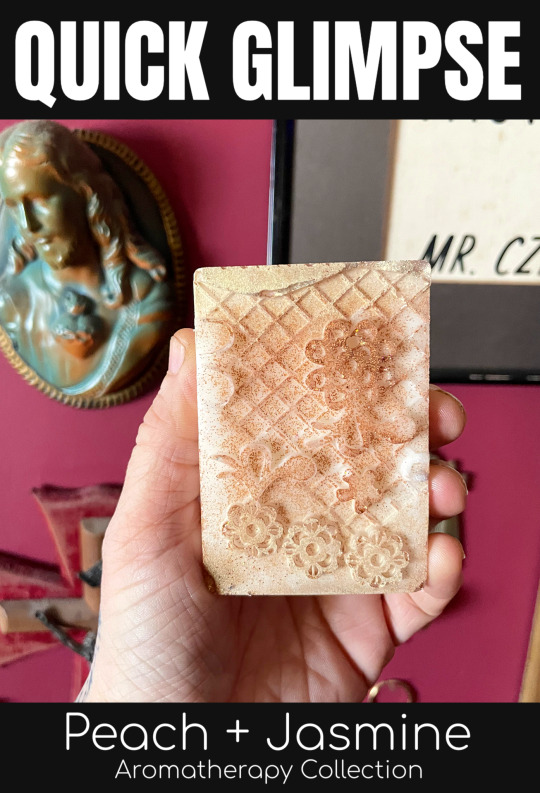
Anew melt that I have created for my Aromatherapy Collection
1 fragrance oil and the rest is essential. More details soon!!
#art#artist#vmt#small business#big cartel#vt#goth#pastel goth#wax melts#home fragrances#prismatic skies aromatherapy collection#aromatherapy collection#peach#jasmine#essential oils#artist vanessa moylan theodore#magpie designs by vanessa moylan theodore#vanessa theodore#vanessa moylan theodore art#vanessa theodore art#artist vanessa theodore#vanessa moylan theodore#vanessa#organizing chaos at prismatic skies#prismatic skies#peach and Jasmine#strong scented wax melts#strong scented candles#strong#Spotify
6 notes
·
View notes
Text
Essential Oils
Basil oil: focus
Clove oil: energising
Wintergreen oil: stress/tension relieving
Tangerine oil: cleansing
Rosemary oil: concentration
Chamomile oil: calming
Peppermint oil: ease stomach/headaches
Lemongrass oil: positivity
Lavender oil: sleep, relaxation
Grapefruit oil: uplifting
Frankincense oil: peace
Rose oil: lifts mood
Eucalyptus oil: clear breathing, opens chest


* Just a general cheat sheet – there are so many more different oils and uses for them :)
* Look for “100% natural oil” on the bottle to know it’s not mixed with harmful chemicals.
#essential oils#aromatherapy#incense#candles#aroma diffuser#spirituality#natural medicine#natural healing#spiritualjourney#diffuser#natural#oils#fragrance oils#fragrance#healing#health#healthy mind#soul#positivity#relaxation#energy#positive energy#plants and herbs#herbs and spices#plants#wicca#witch community#witchblr#green witch#beginner witch
100 notes
·
View notes
Text
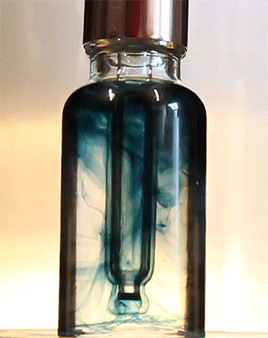
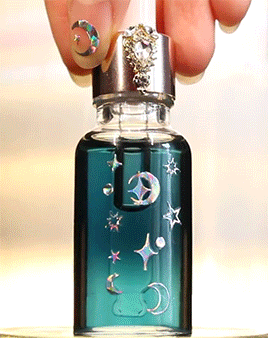
My homemade ◦.·Body Oil·.◦ made with rare ✧Blue Tansy✧ essential oil, Lavender oil and an MCT carrier oil. This oil smells fruity (from Blue Tansy) and herbal (from Lavender) and leaves a divine smell on my skin after the shower.
#non toxic#skin care#homemade#body oil#skincare#blue tansy#essential oil#lavender#aromatherapy#my gifs#my photos#cosmetics#self care#organic#diy#non toxic skin care#color therapy#skin care oil
22 notes
·
View notes
Text
Rain Cloud Humidifier Rain Colorful Mushroom Cloud Raindrop Atmosphere Lamp Night Light Essential Oil Small Aromatherapy Machine





#Rain Cloud Humidifier Rain Colorful Mushroom Cloud Raindrop Atmosphere Lamp Night Light Essential Oil Small Aromatherapy Machine#Sports#Health & Beauty#Art#Martial Arts#Boxing#Shopping#E-marketing#Online Shopping#Sale#Best Product#Best Seller#Ali Express#Alibaba#Amazon#Music#Entertainment#Laughter#Discounts#Special Offer#Free#Canada#America#Britain#Europe#Evening Dress#Bridal Dress#Party Dress#Best Dress#Free Shipping
5 notes
·
View notes
Text
Benifits of peppermint Essential Oil The leaves of the peppermint plant are used to extract the restoring and stimulating essential oil known as peppermint. It is popular for its calming and cooling qualities and is known for its unique, fresh fragrance. Popular treatments for headaches, intestinal discomfort, and respiratory obstructions include the use of peppermint oil. Its stimulating aroma also promotes mental clarity, reduces tension, and increases focus. Peppermint essential oil has several medical and psychological benefits when applied topically, in aromatherapy, or as a component of natural medicines. visit our website.
#hairstyle#skincare routine#essential oils#oil#aromatherapy#long hair#cosmetics#Relaxation#Organic#Natural#Herbs
2 notes
·
View notes
Text
#Aromatherapy#Essential Oils#Healing with Essential Oils#Aromatherapy Guide#Essential Oil Recipes#Natural Healing#Holistic Wellness#Stress Relief#Anxiety Relief#Essential Oil Blends#DIY Aromatherapy#Aromatherapy for Beginners#Advanced Aromatherapy#Therapeutic Essential Oils#Natural Remedies#Health and Wellness#Mindfulness and Aromatherapy#Aromatherapy Techniques#Aromatherapy Benefits#Aromatherapy for Daily Life
2 notes
·
View notes
Text
11 Essential Oils That Will Help Boost Your Mood and Release The Happy Hormones
https://www.rockwoodgifts.co.uk/essential-oils/11-essential-oils-boost-your-mood/
8 notes
·
View notes